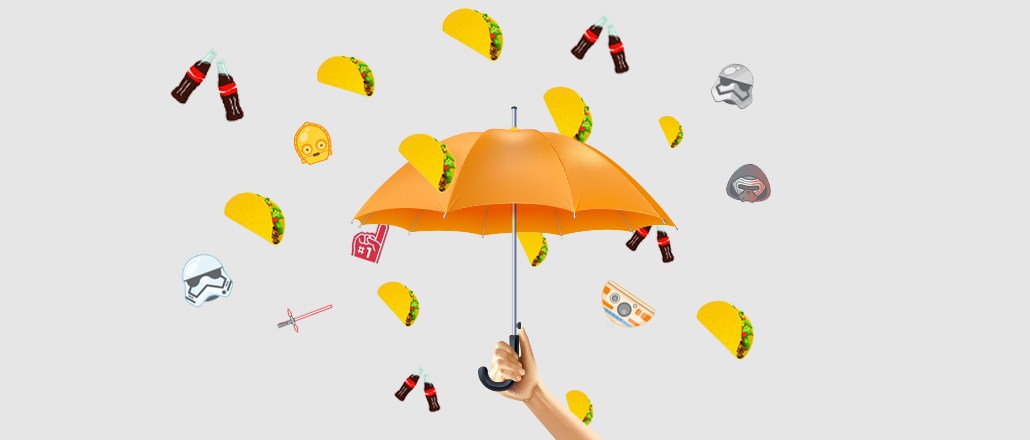
In recent months, more and more brands have been hoping that during a casual conversation with friends, people will forego hearts and smiley faces in favor of a Burger King chicken-fries emoji or maybe one of a curly-haired woman using Dove’s shampoo.
Turns out, that might not really be how regular people speak. In the past year, 250-plus brands have made their own emoji keyboards. Among them were companies including Dove, Burger King, Comedy Central, Cuervo, Century 21, 1-800 Flowers, Alabama Crimson Tide and the Pope. And while certainly popular and easy to make, there’s no evidence that they’re really working.
The why of it was clear and spoke to typical brand logic: Emojis is how millennials communicate, presumably, so why not gatecrash the party.
“Brands always want to figure out how to include themselves in wherever people are,” said Tim Nolan, executive creative director at Huge. “People weren’t visiting browser-based experiences, and they’re talking to each other, so brands will insert themselves that way.”
It was a desperation to be relevant on mobile that drove brands to create branded keyboards, something even the people that are paid to make them agree, like Christian Brucculeri, CEO of Snaps, a software platform that has helped create downloadable emoji keyboards for brands including Burger King and candy maker Trolli.
“We’ve always approached this with the idea that banner ads on mobile don’t work and there aren’t a lot of great places for brands to put a shingle out on a mobile device,” he said.
Obviously, they’re also easy to make and require little in the way of resources — what you’re really paying for is advertising the keyboard itself, not to make it. Which is probably why brands from Dove to Toyota to Bauer have all made their own to prove that they’re down with how the kids are speaking.
Most brands won’t publicly disclose how many downloads emoji keyboards have gotten or how many people actively use them. Brucculeri said emoji keyboards have driven more than “100 million content shares” to date across the network, and his studies show 300 percent increase in intent to purchase — although brands can’t necessarily attribute that just to an emoji keyboard.
Bauer, one of the brands that launched a keyboard last summer, has had 66,000 downloads without paid media in the last year. Margaret Murphy, president and COO at Olson, which made the app, said that keyboards aren’t over, but they are being integrated more into larger marketing endeavors. “The key is to find a passion brand,” for something like this, said Murphy.
Emoji keyboards are part of a larger emoji bubble: As Digiday reported last year, any big brand worth its millennial salt has tried to get emojis into tweets, ads and on keyboards as part of a marketing push, creating a forced feel that experts said many times just didn’t make sense with overall strategies.
There are obvious problems with the keyboards: For one, users have to download an entirely new keyboard. That in itself is a barrier. Then there’s the fact that not too many people are clamoring for Whopper emojis to use on a daily basis.
But more brands are realizing that a slapstick emoji keyboard may not be the right way to get into messaging. Bonin Bough, chief of media and e-commerce at Mondelez — which had made a Sour Patch Kids emoji keyboard last year called Kidmojis — said that he believes that messaging is the single most under-utilized platform on the planet.
“In 2011, there was one messaging app, and today there are so many,” he said. “But when you think about it, there are 4 billion users on Facebook Messenger, for example, but no single platform or ecosystem.” For Bough, emoji keyboards were brands dipping a tenuous toe in the messaging water and not the real trend — the big thing now is going to be that the industry now looks at this as an experiment in messaging, not just in emojis.
Brucculeri says he doesn’t see a slowdown in emoji keyboards necessarily yet but says brands are more interested in figuring out the next step, like, for example, other messaging tech like chatbots, which his company also helps provide a software toolkit for.
“These things end up being useless artifacts on your phone, just like how microsites were,” said Nolan. “At least with microsites, you’d see it once and then you wouldn’t again. It’s such a cheap shot.”
More in Marketing

Pitch deck: How Amazon is recasting Twitch as a core part of its CTV pitch
Amazon is positioning Twitch as a defining asset in its CTV ambitions.

Netflix transforms former mall department stores into experiential venues
The location in Dallas opens this week, and one at the King of Prussia mall near Philadelphia opened last month.

Future of Marketing Briefing: AI has created a new talent paradox in programmatic agencies
The job isn’t execution anymore. AI handles that. The job is judgement.





